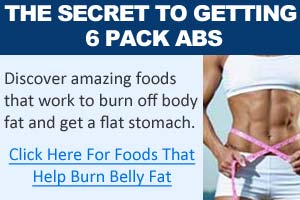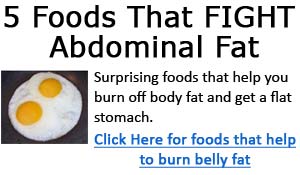3. Super-set or group exercises.
Perform either non-competing muscle group training or antagonist
training. Non-competing muscle group training would involve
doing a set of a lower body exercise, and following it up
with an upper body exercise Antagonist training is executed
by alternating exercises that target opposing muscle groups
(e.g. chest and back). The list of benefits includes: quicker
recovery, greater strength levels and shorter workout times.
This design can be a huge advantage in your mission to burn
fat. If you alternate exercises for opposing or non-competing
muscle groups, you’ll be able to keep your heart rate
elevated and burn calories like a blast furnace!
4. Keep rep ranges, in general, between 8 and 12.
Through research, it has been determined that the best range
for hypertrophy (muscle gain) is roughly between 8-12 reps.
Since the main focus of your resistance training efforts
is to gain lean body mass and stimulate your metabolism,
this rep range fills the bill perfectly. “High reps
for tone and fat loss” is the “big kahuna” of
all training myths! Somehow the aerobics, yoga and Pilate’s
community have convinced us that when we perform bodyweight
exercises or light resistance training for high reps, our
muscles magically take on a beautiful shape without growing
or bulging. On the other hand, if you challenge yourself
with moderately heavy weights, your body will take on a bulky,
unflattering appearance. If you believe this, you probably
still believe in the Tooth Fairy!
5. Rest only 30 to 60 seconds between sets.
 When you keep the rest periods under one minute, it’s
easier to stay focused on the task at hand and keeps your
heart rate elevated. In addition, it forces your muscles
to recover more quickly between sets, along with keeping
your nervous system revved up.
If your first movement in an upper/lower body superset is
squats, you might want to rest 60 seconds before attempting
your second movement. However, if your first exercise is
a fairly "easy" exercise, like lat pull downs, you might
only wish to wait 30 seconds before doing the second part
of the superset.
When you keep the rest periods under one minute, it’s
easier to stay focused on the task at hand and keeps your
heart rate elevated. In addition, it forces your muscles
to recover more quickly between sets, along with keeping
your nervous system revved up.
If your first movement in an upper/lower body superset is
squats, you might want to rest 60 seconds before attempting
your second movement. However, if your first exercise is
a fairly "easy" exercise, like lat pull downs, you might
only wish to wait 30 seconds before doing the second part
of the superset.
6. Every session should consist of approximately
six to eight exercises.
Why? Because empirical
evidence has shown that normal trainees can consistently
maintain six to eight exercises per session without burning
out.
It’s imperative to base your exercise selection around
compound, multi-joint exercises. Seventy-five percent (75%)
of your exercises for each session must be compound exercises.
Six single-joint isolation exercises are not going do the
trick. Sure, you can perform a few isolation exercises,
but the majority of your exercise choices should be multi-joint.
7. Perform Total Body Workouts
First and foremost, you must drop the notion that a muscle
group can only be trained once or twice a week. Fitness enthusiasts
from the past didn't train that way and you shouldn't either.
The more frequent muscle producing / fat burning sessions
you can have, the better.
8. Cardio is not the cure-all for Obesity
Cardiovascular exercise aids in the creation of a caloric
deficit, but the caloric expenditure during cardio is temporary.
Strength training addresses the core of the problem by permanently
increasing the rate at which the body burns calories by adding
muscle. The best programs will include both strength training
and cardiovascular training, but the core or the programs
effectiveness is resistance training.
9. When you do cardio, do it first thing in the morning.
Do your cardiovascular training first thing in the morning
on an empty stomach. You’ve gone 8 or more hours
without eating, so your blood sugar levels are at their lowest
when you first wake up. After about 10-15 minutes of
cardio training on an empty stomach, you’ll have
burned up all your remaining blood sugar.
Once your blood sugar is used up, the only remaining source
of fuel your body has to continue with your cardio exercise
is your stored body fat.
10. Vary your pace during your cardio training sessions.
Don’t maintain a constant steady pace while you’re
on the treadmill or elliptical machine. Numerous studies
have shown you’ll burn more calories and more fat
if you train in intervals.
Start out by going for 1 minute at your normal walking
pace. Then,
for the next 30 seconds, speed it up to a run. After
the 30 seconds at an increased pace, slow back down to your
original pace for 1 more minute. This is known as an
interval. Repeat this interval style cardio for 10-20
minutes.
Performing your cardio in this “interval” fashion
will allow you to burn more fat and calories in less time
than just keeping a nice steady pace. This will increase
the results you see while reducing your time on the treadmill,
stationary bike, or whatever form of cardiovascular training
you do.
>> Click here for a real solution that will help you Burn Off the Fat

 Are you looking for that “jump start” to rev
your metabolism and get you bathing suit ready? The following
ten tips will improve your workouts and ignite your metabolism.
Try some or all of these tips, but beware, the result may
be a number of admiring second glances and stares when you
don that bikini or pair of trunks.
Are you looking for that “jump start” to rev
your metabolism and get you bathing suit ready? The following
ten tips will improve your workouts and ignite your metabolism.
Try some or all of these tips, but beware, the result may
be a number of admiring second glances and stares when you
don that bikini or pair of trunks.